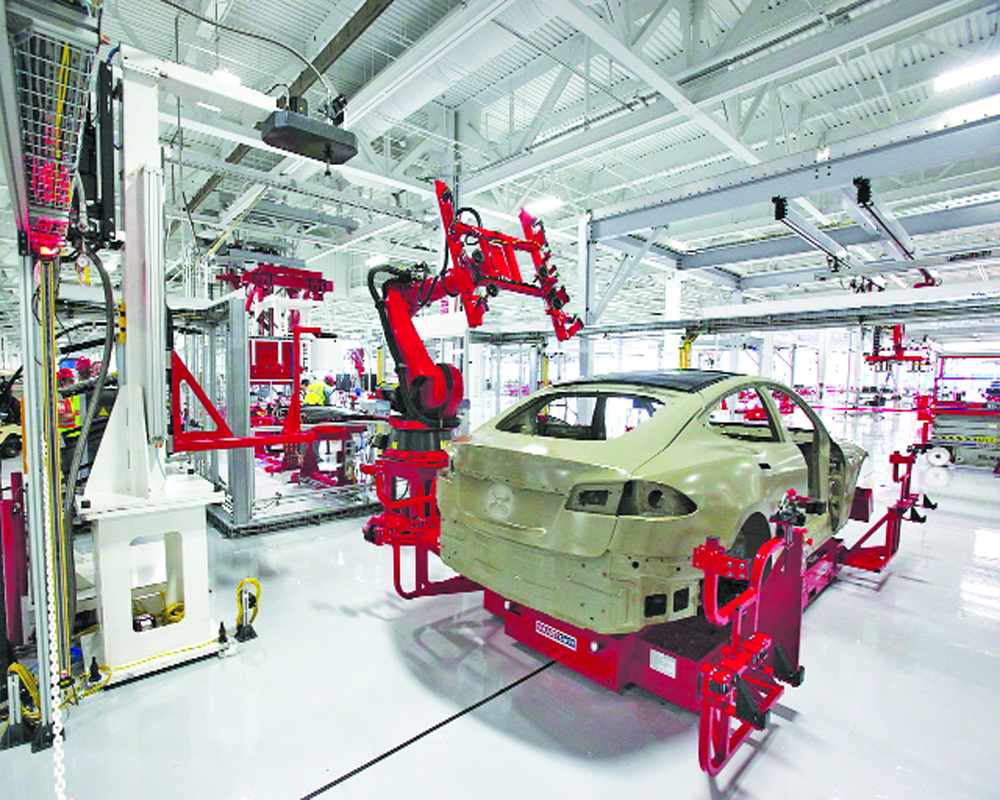There is a marked shift in the global order; the US influence is on the ebb
The global economy is shifting away from globalisation, which the United States has led since the Second World War, and toward protectionism. Through the Second Industrial Revolution, the USA's dominance in technology and the economy allowed them to control the world's order. The USSR, however, posed a formidable challenge to the USA. Despite earlier rising to prominence with a share of 21.32% of the global economy in 1980, its economic power has waned, reaching a proportion of 15.47% in 2022 and possibly will decline further. Policies of both Donald Trump and Joe Biden endorse protectionism, while globalization was once promoted as virtuous and irreversible by previous US presidents. The global political economy has transformed drastically. China has emerged as the United States' principal opponent, with a larger share of the global economy (18.58% in 2022) than the United States. To counter China's high-tech ambitions, the United States has enacted the Creating Helpful Incentives to Produce Semiconductors (CHIPS) and Science Act, 2022, which incentivizes domestic semiconductor production. The recipients of incentives cannot build facilities in China and other countries of concern.
In addition, the Inflation Reduction Act of 2022 (IRA) was enacted to curb inflation through a variety of measures, including investments in domestic energy production and the promotion of sustainable energy. This will minimise electric vehicle batteries' reliance on China. All these actions against China form an economic cold war. The United States suspects that due to the Chinese government’s control over the country's commercial sector, US-made cutting-edge technology may leak into the Chinese military.
From 1947 until 1991, the United States and its former rival, the Soviet Union, were engaged in a cold war. India had to bear its unforeseen effects. Since its independence, India has maintained close ties with the USSR in research, technology, and economic growth.Father of Modern Statistics in India, Prasanta Chandra Mahalanobis, was one of the principal architects of the Second Five-Year Plan. However, his proximity to the USSR came at a price.In the 1950s, despite years of Mahalanobis's persuasion, ISI was unable to get a UNIVAC computer produced in the United States. UNIVAC's capabilities differed from those of Soviet machines. UNIVAC was more effective at processing massive volumes of numeric data, whereas Ural was best suited for solving mathematical problems. ISI had a direct stake in the former because it needed to process NSS data for planning purposes. The cause for the failure of getting UNIVAC is extremely unexpected; it was Mahalonabis' image to the United States as a Soviet sympathizers during the Cold War. In actuality, what fascinated Mahalonabis was its planning exercise, not its political ideology. The rules established by CHIPS and IRA are a sad reminder of the United States fear regarding its nearest foe and its quest for supremacy. However, the United States' current opponent China has no positive relations with India. Therefore, it is unlikely that these rules will harm India's interests. The economic cost of industrialisation for all strategic items in a country can be prohibitive. Therefore, the US would prefer to diversify its supply chain with friendly nations such as India. Only if other nations restrict their trade connections with China, the only United States will gain from these actions. If smaller trading groupings are formed as opposed to the former free trade regime, it might be possible. India should become a prominent member of such groups. However, falling out of favour with major powers would spoil the plot. India’s military and economic relations with Russia may antagonise the United States as it did before.
(The writer is an Associate Professor Institute of Rural Management Anand. The views expressed are personal)


























